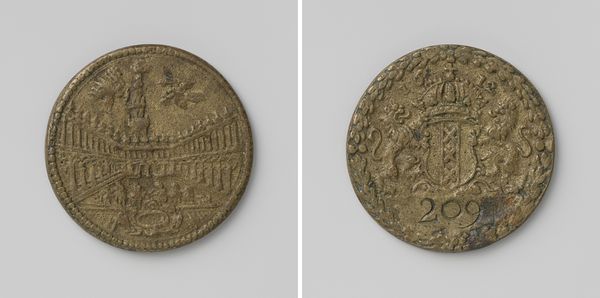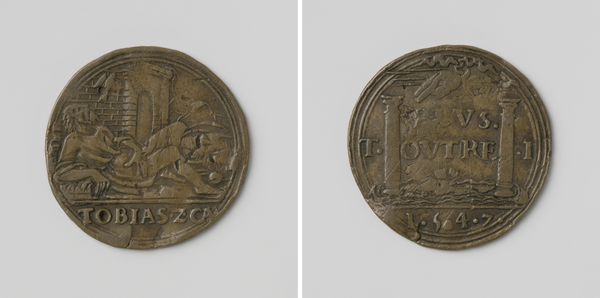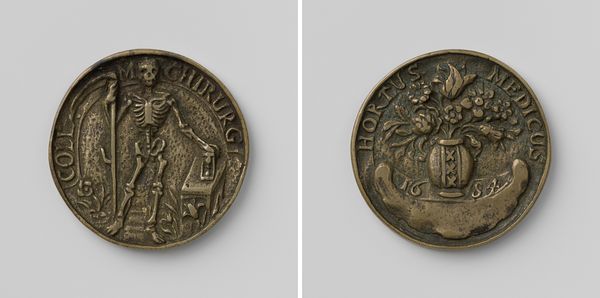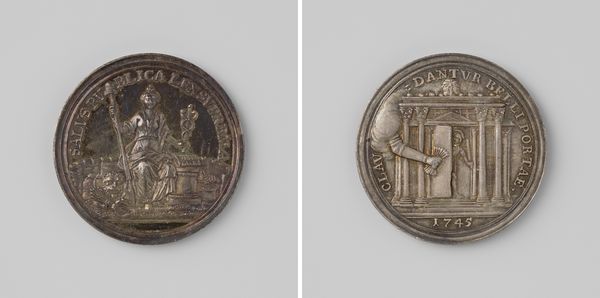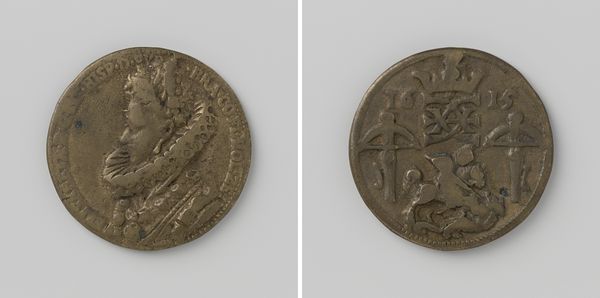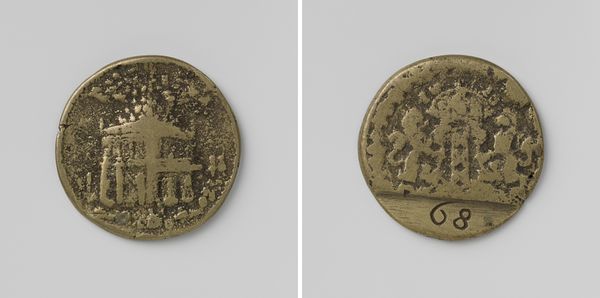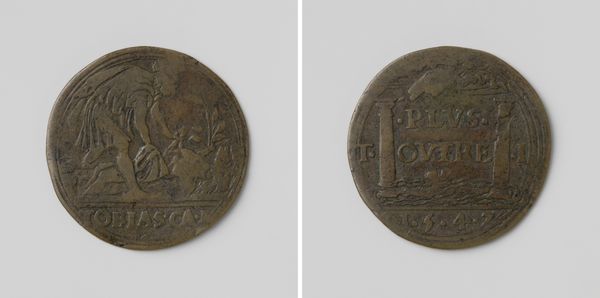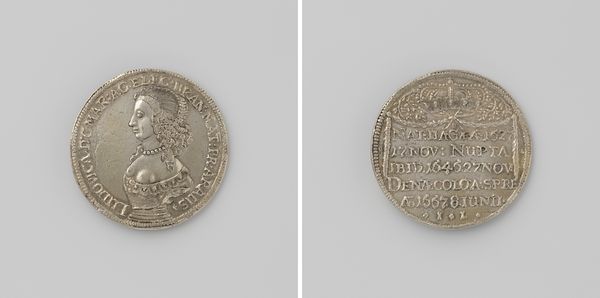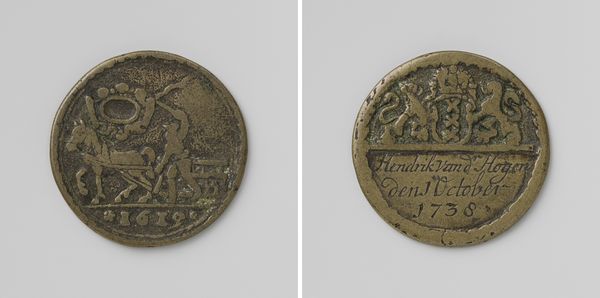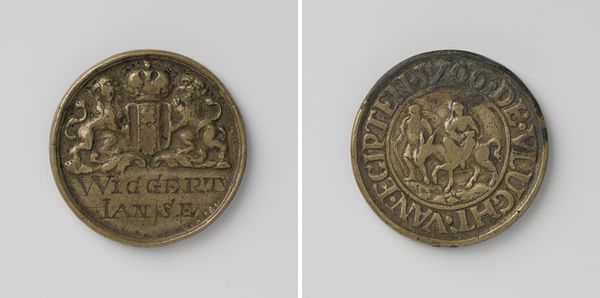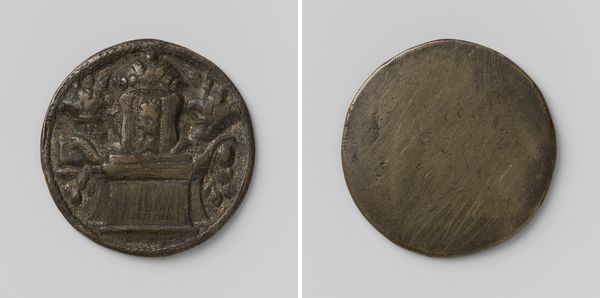
#
natural stone pattern
#
3d sculpting
#
3d printed part
#
detailed texture
#
sculptural image
#
unrealistic statue
#
3d shape
#
stoneware
#
metallic object render
#
3d modeling
Dimensions: diameter 3.3 cm, weight 10.79 gr
Copyright: Rijks Museum: Open Domain
Editor: So, this is a funeral medal from 1618 made for the Amsterdam guild of "Waagdragers" which I believe means "Weighers" or "Carriers," by Hans Rogiers van Harelbeke. It looks like bronze? It feels surprisingly… practical. There's a building and figures on one side, and some kind of crest and number on the other. How do you interpret this piece? Curator: The "practicality" you perceive speaks volumes! These weren't made to be aesthetically pleasing trinkets, but rather, consider them powerful objects of remembrance and affiliation within a specific social hierarchy. Look closely – it signifies membership within a particular group, one crucial to Amsterdam's mercantile power. How does the imagery on both sides connect, in your mind, to themes of labor, community, and mortality within the Golden Age? Editor: Well, the building... maybe it's their Guildhall, the site of their work, community? And it’s paired with the crest, reinforcing that belonging, but the fact that it's a funeral medal points to their mortality? The great leveller and equalizer for everyone regardless of if they are members of the guild. Curator: Exactly. Now, think about the social implications. Guilds in the 17th century weren't just economic bodies; they controlled access to certain trades and often reproduced existing power structures. Who was included, and who was excluded from these circles? How might gender, race, or even religious affiliation play into membership, and subsequently, representation on an object like this? Consider that absence in the piece itself a sort of haunting! Editor: That's really insightful. I hadn’t thought about who *wasn't* represented. The medal seems so simple, but there’s a lot more beneath the surface about power, identity, and social structures during that era. Thanks. Curator: Precisely! Art isn't just about the visible; it's about the silent narratives and the historical contexts that shape it. It really brings up so many points around inclusivity, gender, race and even religion at the time that are echoed today. It encourages us to be aware of whose story is told, and who we may not hear.
Comments
No comments
Be the first to comment and join the conversation on the ultimate creative platform.
